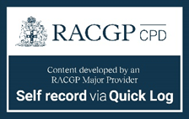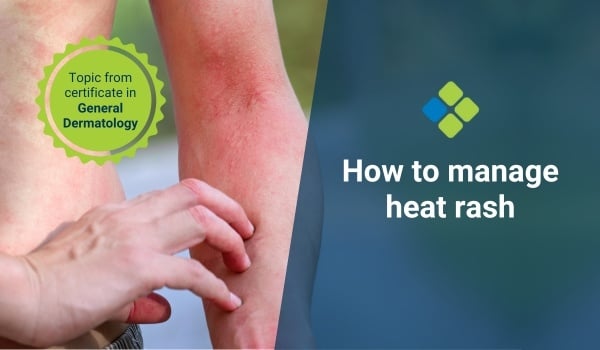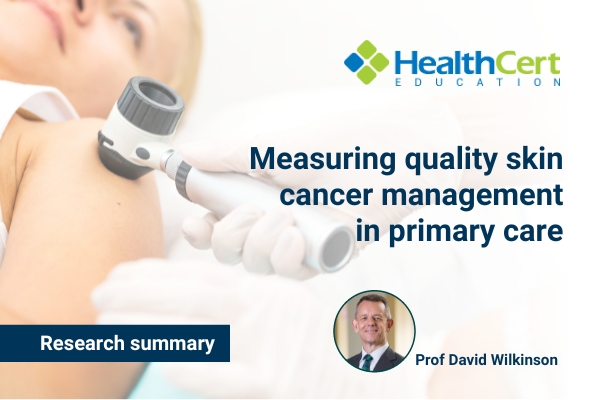Managing nappy rash in primary care
Read more about the management of nappy rash, including how to recognise and treat the condition and how to educate caregivers on nappy hygiene practices.
-1.jpg)
HealthCert Education
Nappy rash is a common sighting in primary care. It usually affects infants and toddlers. Although its symptoms are concerning for the caregivers and cause discomfort for the child, the condition itself is not serious. Nevertheless, the management of nappy rash is an essential skill for primary care doctors and basic training in general dermatology can be helpful.
How to recognise nappy rash
Nappy rash (also called diaper rash) is an inflammatory skin condition. The symptoms, such as redness, swelling, and (sometimes) blistering or peeling of the skin, appear in the diaper area.
Main causes of nappy rash include:
- Friction
- Prolonged exposure to moisture
- Irritants (in urine or stool)
- Allergic reactions
- Secondary infections
The friction resulting from the rubbing of nappies against the skin and irritant contact dermatitis (prolonged contact with urine and faeces) are the main causes of nappy rash. Other causes may include allergies to certain nappy materials, wipes, or detergents. Last but not least, secondary bacterial (Staphylococcus aureus or Streptococcus), or Candida infections may worsen the rash.
Diagnosing nappy rash
A thorough history and physical examination are often sufficient to diagnose nappy rash. Key points include:
- Duration of the rash
- Diapering and hygiene practices
- Recent illnesses or antibiotic use
- The appearance of the rash (the presence of satellite lesions suggests Candida infection).
How to manage nappy rash in primary care
Primary care providers play a crucial role in managing nappy rash by addressing its causes, alleviating symptoms, and educating caregivers.
The general measures for nappy rash management include:
- Frequent nappy changes
General practitioners should advise caregivers to change nappies as soon as they are wet or soiled to minimise exposure to irritants.
- Gentle cleaning
Recommend using lukewarm water and a soft cloth or fragrance-free, alcohol-free wipes to clean the area.
- Increased air time
Encourage nappy-free time to allow the skin to breathe and heal.
- Using barrier creams
Recommend the application of zinc oxide or petroleum jelly to protect the skin from irritants.
GPs should also discourage the use of talcum powder due to the risk of inhalation, emphasise the importance of nappy hygiene, and educate caregivers to avoid harsh soaps and perfumed products that can worsen irritation.
How to treat nappy rash
With mild cases of nappy rash, primary care doctors should recommend over-the-counter barrier ointments and make sure that caregivers are following the general measures consistently.
In moderate or severe cases, when fungal or bacterial infections and inflammation are present, antifungal topicals (Clotrimazole, Miconazole) and topical (Mupirocin) or oral antibiotics may be necessary.
The short-term use of a low-potency corticosteroid creams (hydrocortisone 1%) can help reduce severe inflammation.
When to refer
It is best to refer a patient to a dermatologist or paediatric specialist if:
- The rash does not respond to standard treatment
- There are signs of a systemic infection (fever, lethargy)
- There is a suspicion of an underlying cause such as eczema or psoriasis
With a systematic approach, focus on prevention, and prompt treatment, nappy rash becomes an easily manageable condition in a primary care setting.
– Dr Rosmy De Barros
For further information on this topic, you may be interested to learn more about the HealthCert online Professional Diploma program in General Dermatology.
Engaging with this blog can help meet your annual
|

How to claim your CPD hoursIf you consume educational webinars, podcasts, articles, or research on this blog, you can Quick Log CPD hours with the RACGP via the usual self-submission process. You will be asked to reflect on what you have learned, and you will require supporting evidence such as a screenshot.Download the RACGP’s guide to self-recording your CPD here. |
References
- Serdaroğlu, S., & Üstünbaş, T. K. (2010). Diaper dermatitis (napkin dermatitis, nappy rash). J Turk Acad Dermatol, 4(4), 04401r.
- Lawton, S. (2020). Nappy rash: current evidence for the prevention and management. British Journal of Midwifery, 28(5), 291-295.
- Oberai, C. (2008). Nappy Rash-How to Manage. Journal of Neonatology, 22(1), 56-59.
- Bonifaz, A., Rojas, R., Tirado-Sánchez, A., Chávez-López, D., Mena, C., Calderón, L., & María, P. O. R. (2016). Superficial mycoses associated with diaper dermatitis. Mycopathologia, 181, 671-679.
- Buckley, D. (2021). Paediatric Dermatology. Textbook of Primary Care Dermatology, 201-208.

 1800 867 1390
1800 867 1390


.jpg)



